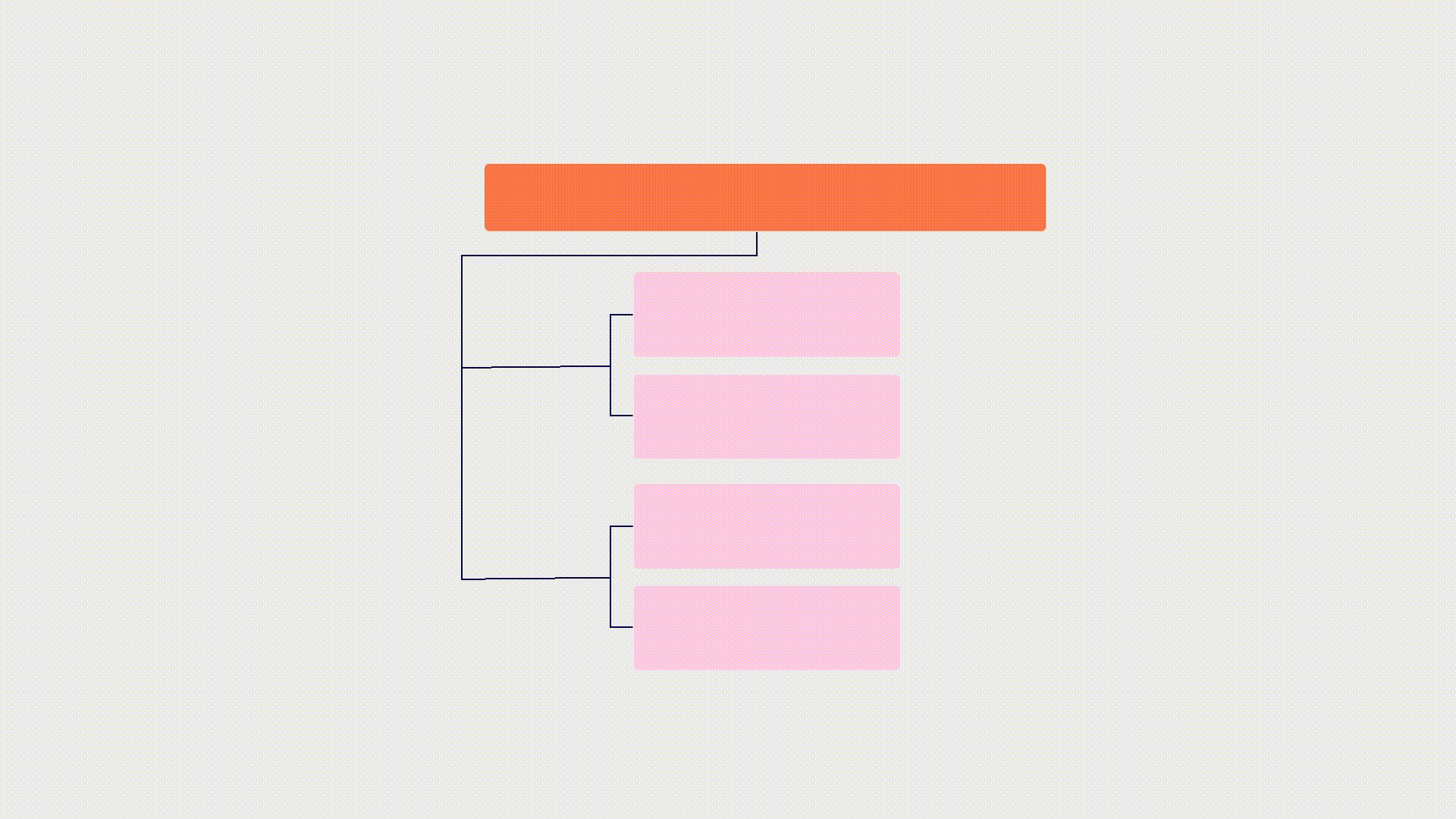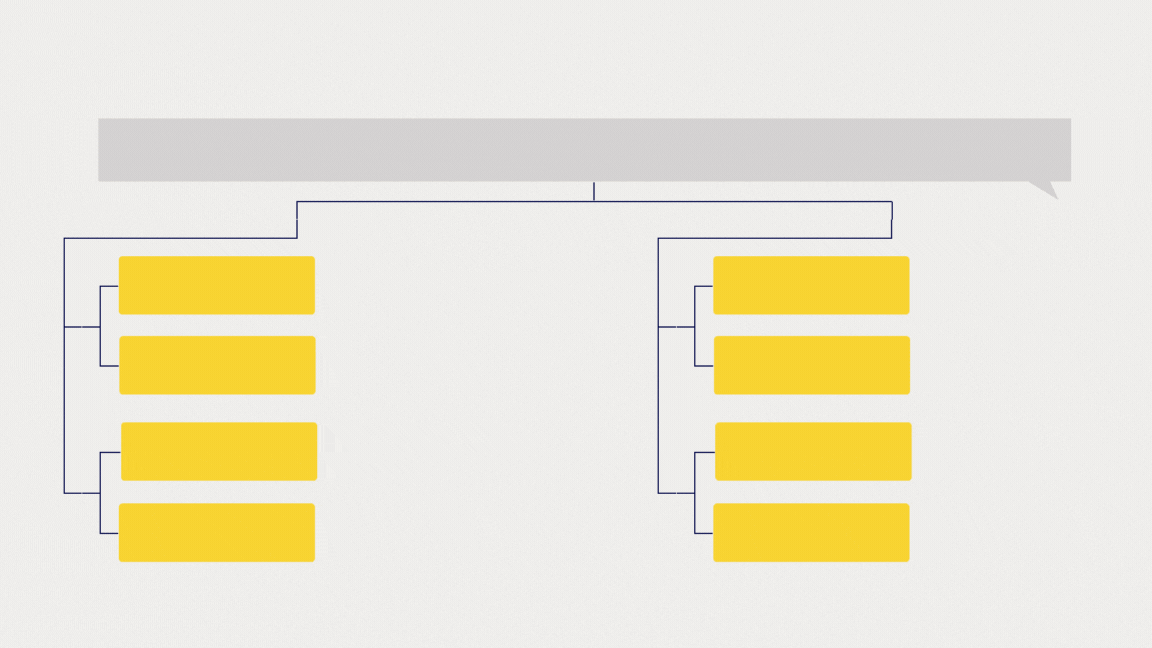What is Data Science?(2024) | Practical Examples | Happy Learning🔥
In the 21st century, Data science is fueling the IT industry, and its applications are having a large impact on businesses. Therefore, it has become necessary to understand what is Data Science. In this blog, you will get to know a lot of things about Data Science. So, read the entire blog, and at the end, you will get the answers to most of the questions.
Below is the list of topics that are covered in this post.
Table of Contents
Introduction to Data Science
So, let’s get started by knowing “What is Data Science?”.
Firstly, do you agree that every day you generate data in some form or another? If not, let me tell you how you create data. Nowadays, everyone uses mobile phones, right? We use mobile phones on a daily basis. The applications that we use include such as WhatsApp, Facebook, Instagram, Google Maps, Paytm, PhonePe, and some investing applications. So, these are a few of the applications with which we share data, knowingly or unknowingly. Further, let us see what kind of data you share with the applications that these companies use for their business growth:
1. Use Case: Whatsapp
The data collected by WhatsApp is in the form of text messages, images, videos, etc. After the collection of data, it is analyzed according to the business perspective. For example, if you just chat with your friend about buying a phone, you are likely to get an advertisement on Facebook, Flipkart, or Amazon. So, this is due to the data product built by the companies that allow them to use the data for targeted advertisements to generate revenues. Therefore, showing the advertisements will help them sell products for which they take commissions from the company who want to advertise their products.

2. Use Case: Facebook
If you try to search for a product on Google, you will definitely get an advertisement in your Facebook account. After you click on the ad and visit the website you are likely to buy a product. And this is how the company will sell its product and generate revenues. The companies have to pay Facebook for showing the ad on their website or targeted advertisement.

3. Use Case: Google Maps
You all use Google Maps either for searching for someplace, or navigating to a destination while traveling. So, while using Google Maps you give information about your location. Thereafter, Google uses this information to show you the content relevant to you. For example, Google will show you the local news, famous places near you, and many more. Then, Google will place the ads on those posts. So, when you open the posts, some people may click on the ads and purchase the products if it is of their use. Therefore, if 1 million people visit the post, 1 lakh people click on the ad, and if even 5000 buy the product it will have a lot of impact on revenue generation.

So, how is this all possible? It is with the help of Data Science. These companies use data, apply some science and techniques, analyze, and create their strategies for ad revenues.
Moreover, Data science incorporates subject-matter knowledge, programming, and competence in math and statistics to extract important data-driven insights. Data scientists create artificial intelligence (AI) systems to carry out activities that often need human intellect. It does so by applying algorithms to specific types of data such as numbers, text, pictures, video, audio, and more. The insights these technologies produce may then be transformed into real commercial value by business users and analysts.
What occurred, why it happened, what will happen, and what can be done with the outcomes are just a few of the questions that this analysis helps data scientists ask and answer.
I hope the above examples have given you the answer to the question what is Data Science?
Further, let us understand what is the importance of data science.
What is the importance of Data Science?
The importance of Data Science lies in the fact that data is the fuel of business. Data is a useful resource for many businesses to aid in making thoughtful and sensible business-related decisions. Data science has the capacity to transform unstructured or raw data into insightful knowledge that can further assist businesses to perform in the market.
How will Data Science impact the future?
Imagine the businesses and industries without Data Science. Will they be able to generate proper revenue and in turn more employment? The answer is ‘No’. You already saw the example of Whatsapp, Google, and Facebook, and how they generate revenue. It is all with the help of Data Science, Machine Learning, and AI. If these tech companies do not incorporate Data Science, they would not be able to generate revenue and it will impact overall employment.
So, in the future, Data Science, AI, and machine learning will become increasingly important to businesses. Regardless of their size or sector, businesses must quickly create and deploy data science skills if they want to be competitive in the big data era. Otherwise, they run the danger of falling behind. Therefore, there will be a lot of opportunities since every business will become more and more data-driven in the future.
Types of Analytics in Data Science
The latest scenario in the industry is that organizations are drowning in data. By integrating numerous techniques, technologies, and tools, data science is helping to derive insightful conclusions from the data. The industries where Data Science is used include:
- E-commerce,
- Stock market
- Banking & Finance
- Healthcare & medicine
- Human resources
- Media & Entertainment
But in these sectors also, there are some specific types of analytics they perform using Data Science and they are:

Descriptive Analytics
Using descriptive analysis, you can identify the trends in the data to gain insights about what is happening or happened in the industry. You can visualize all the insights using graphs such as histograms, bar plots, boxplots, pie charts, line charts, and many more. Some of the use cases of descriptive analytics are online shopping trends from amazon, Flipkart, or Myntra.
Also, while performing the descriptive analytics you can find out the purchase patterns. The purchase patterns may be based on previous records during the new year, festivals, or some specific time of the year to boost sales.
Diagnostic Analytics
What if you the online retailer want to deep dive to know the reason why in a specific month the sale went up or down? They will definitely diagnose the factors that affect sales, analyze the business corresponding to the factors, and optimize their business strategies. This is all done with the help of diagnostic analytics and it includes the following:
- Data Mining
- Drill down and find the patterns in the data
- Finding the correlation between the data attributes
Further, let us understand what is predictive analytics.
Predictive Analytics
Predictive as the name denotes is used for predicting future possibilities by making accurate forecasts. This type of analytics helps find the patterns in historical data to predict the business events(opportunities) that may occur in the future. The techniques used to perform predictive analytics are:
- Machine Learning
- Data Analysis
- Forecasting
- Time series analysis
- Pattern matching
- Predictive modeling
The e-commerce companies roll out a lot of interesting offers during festival seasons. The offers are based on predictive analytics of the previous years of data that gives them the idea to build strategies for pitching sales. Further, there can be a variety of predictions on the basis of predictive analytics. Now, what is the best strategy that will yield the maximum profit or help to avoid losses? So, for that let us understand prescriptive analytics.
Prescriptive Analytics
When you say ‘prescriptive’ it means an optimal solution to some problem might have been suggested. So, Prescriptive analytics directs the business decision based on the predictions in the right direction. It can assess the probable effects of various decisions and suggest the optimal solution.
For example, online shopping websites like Amazon, Flipkart, etc use prescriptive analytics to analyze historical data of their marketing and sales. The analysis helps the company to get an idea about the upcoming demand for products. This strategy will help the companies to make the business more profitable.
Types of business sectors using Data Science
Data science is used in a wide range of business sectors, as it is a valuable tool for extracting insights from large data sets and making data-driven decisions. Some of the sectors that commonly use data science include:

- Finance: Financial institutions such as banks, investment firms, and insurance companies use data science to analyze financial data. Data Science helps companies identify trends that can inform investment strategies and risk management.
- Healthcare: Healthcare providers use data science to analyze patient data and improve patient outcomes by identifying effective treatments and predicting potential health issues.
- Retail: Retailers use data science to analyze customer data and optimize marketing strategies, pricing, and inventory management.
- Manufacturing: Manufacturing companies use data science to optimize production processes and improve product quality.
- Transportation: Transportation companies use data science to optimize route planning, improve vehicle maintenance, and predict demand.
- Energy: Energy companies use data science to analyze energy consumption patterns and optimize energy production.
- Education: Educational institutions use data science to analyze student performance data and develop personalized learning plans.
- Government: Governments use data science to analyze data on everything from crime rates to public health outcomes and inform policy decisions.
Overall, data science is becoming increasingly important in many different sectors. Organizations seek to gain a competitive edge by making better use of the vast amounts of data available to them.
Data Science project life-cycle
The data science project lifecycle typically consists of several stages that involve defining the problem, acquiring and preparing data, analyzing and modeling the data, and presenting the results. Let us try to understand what steps you need to follow while working on a Data Science project. Here is an example of a time series analysis project lifecycle.
Problem Statement: Assume that you work for a perfume manufacturing company. As a Data Scientist, your task is to forecast the sales of perfumes using time series analysis. So, in general, the steps that should be followed to accomplish the sales forecasting tasks are described below:

Define the problem
Identify the problem you want to solve using time series analysis. For example, you may want to forecast sales for a retail company.
Data acquisition and preparation
Collect relevant data and prepare it for analysis. In the case of a retail sales forecast, you may collect sales data from the past few years and prepare it by cleaning and organizing it.
Exploratory data analysis
Conduct exploratory data analysis (EDA) to gain insights and identify trends in the data. For example, you may plot the sales data over time to see if there are any seasonal trends or spikes.
Time series modeling
Build a time series model to forecast future sales. You may use a statistical method such as ARIMA (Autoregressive Integrated Moving Average) or a machine learning algorithm such as LSTM (Long Short-Term Memory) to build the model.
Model evaluation
Evaluate the performance of the time series model. You may use metrics such as mean absolute error (MAE) or root mean squared error (RMSE) to assess the accuracy of the model.
Deployment
Deploy the model in a production environment. For example, you may create a dashboard that displays the forecasted sales for the next month or quarter. The dashboard can be used by the team to see the sales forecast.
Monitoring and maintenance
Monitor the performance of the model over time and update it as necessary. For example, you may retrain the model with new data to improve its accuracy.
Throughout the project lifecycle, it is important to document your work and communicate your findings to stakeholders. This ensures that the project is transparent and reproducible and helps stakeholders understand the insights and recommendations derived from the time series analysis.
This is how a Data Science project lifecycle looks. Now, let us see some of the algorithms used in Data Science projects.
What are the algorithms used in data science projects?
There are many algorithms used in data science projects, depending on the specific task and the nature of the data being analyzed. Some of the most commonly used algorithms in data science projects include:
- Regression: Regression algorithms help in predicting numerical values, regression algorithms include linear regression, logistic regression, and polynomial regression.
- Decision Trees: The decision tree algorithm allows to solve classification and regression problems. Decision trees are tree-like models where each node represents a feature, each branch represents a decision rule, and each leaf represents a prediction.
- Random Forest: A popular ensemble method that combines multiple decision trees to improve prediction accuracy and reduce overfitting.
- Neural Networks: Inspired by the structure and function of the human brain, neural networks are powerful models. Application developers can use neural networks for a wide range of tasks. These tasks include classification, regression, and image recognition.
- Clustering: Data Scientists use clustering to group similar data points together, clustering algorithms include k-means, hierarchical clustering, and DBSCAN.
- Support Vector Machines (SVM): Data Scientist uses SVM for classification and regression tasks. SVMs aim to find the best hyperplane that separates the data into different classes.
- Principal Component Analysis (PCA): PCA is one of the important algorithms used for dimensionality reduction. PCA is a technique that finds the most important features in the data and reduces the number of dimensions while preserving as much information as possible.
- Association Rule Mining: Data scientists use this algorithm to find patterns and relationships in large datasets. The algorithms for association rule mining algorithms include Apriori and FP-growth.
These are just a few examples of the many algorithms used in data science projects. The choice of algorithm will depend on the specific task at hand, the nature of the data, and the goals of the project.
Challenges in Data Science projects
Data science projects can pose several challenges that must be overcome to ensure their success. Some of the common challenges in data science projects are:
- Data quality and availability: Data scientists may face challenges in accessing and obtaining high-quality data for analysis, which can limit the accuracy and reliability of their models.
- Preprocessing and cleaning: Data often needs to be preprocessed and cleaned before it can be analyzed, and this can be a time-consuming and difficult process. Issues such as missing data, outliers, and inconsistent data formats can further complicate this process.
- Feature selection and extraction: Identifying the most important features in the data and extracting relevant information from them can be challenging.
- Model selection and tuning: Choosing the most appropriate model for the data and fine-tuning its parameters can be a complex process that requires a deep understanding of the data and the algorithms.
- Interpretability and explainability: As models become more complex, it can be difficult to understand how they are making predictions, which can limit their usefulness in some applications.
- Ethics and privacy concerns: Data scientists must be aware of potential ethical and privacy concerns related to the data they are analyzing and the models they are building.
- Deployment and scalability: Moving models from development to production environments can be a challenging process that requires careful planning and attention to scalability and performance issues.
Addressing these challenges requires careful planning, effective communication, and the use of suitable tools and techniques. Overcoming these challenges can lead to better insights and more accurate predictions, ultimately improving decision-making and delivering value to the business.
Technologies associated with data science
There are many technologies associated with Data Science, some of the key ones are:

- Programming languages: Data Science commonly involves the use of programming languages like Python, R, SQL, and Julia.
- Data visualization tools: Visualization tools such as Tableau, ggplot, D3.js, and Matplotlib helps to create charts, graphs, and dashboards to help communicate insights from data.
- Machine learning frameworks: Machine learning frameworks such as TensorFlow, Scikit-Learn, PyTorch, and Keras allows us to build and train models for classification, regression, clustering, and other types of analysis.
- Cloud computing platforms: Cloud platforms like AWS, GCP, and Microsoft Azure offer scalable computing and storage resources to process large-scale data.
- Big data technologies: Technologies such as Apache Hadoop, Apache Spark, and Apache Hive help to process, store, and analyze large volumes of data.
- Database technologies: Relational database management systems (RDBMS) like MySQL, PostgreSQL, and Oracle allows application engineers to store and retrieve data. While NoSQL databases like MongoDB and Cassandra help with distributed and scalable data storage.
- Data integration and ETL tools: Tools such as Apache NiFi, Talend, and Informatica help to extract, transform, and load data from different sources into a central data warehouse.
- Natural language processing (NLP) tools: The use of NLP tools such as NLTK, SpaCy, and Gensim helps to analyze and understand human language data.
These are just some of the many technologies that are used in Data Science, and the list is constantly evolving as new technologies emerge.
Comparison of data science with other fields
Data Analytics vs Data Science
Data analytics is the process of examining data to draw conclusions about the information it contains. It typically involves descriptive and diagnostic analysis, which means analyzing historical data to understand what happened and why it happened. You can use Data analytics to answer specific questions and solve specific problems, often within a specific business domain.
Data science, on the other hand, is a broader field that encompasses data analytics but also includes predictive and prescriptive analysis. The predictive analysis involves using statistical models and machine learning algorithms to make predictions about future events based on historical data. The prescriptive analysis involves using data and models to make recommendations for future actions. Data science often involves working with unstructured and complex data and requires a wide range of technical and non-technical skills.
In summary, data analytics is more focused on analyzing historical data to answer specific questions and solve specific problems. Whereas, data science is a broader field that involves analyzing and predicting complex data to make informed decisions and take strategic actions.
Business Analytics vs Data Science
Business analytics is a subset of data analytics that is specifically focused on solving business problems. It involves using data and statistical analysis to identify patterns and trends that can help businesses make data-driven decisions. This field typically involves descriptive and diagnostic analysis, which means analyzing historical data to understand what happened and why it happened. Also, Business analytics often involves the optimization of business processes, increasing efficiency, and improving decision-making.
In summary, business analytics focuses on using data to solve specific business problems.
Data Engineering vs Data Science
Data engineering focuses on designing, building, and maintaining the systems and infrastructure that enable the processing and analysis of data. This involves developing and managing the tools and platforms that collect, store, and process data, such as databases, data warehouses, and data pipelines. Data engineers work closely with data scientists and other stakeholders to ensure that data is accessible, reliable, and secure for analysis.
Moreover, data engineering focuses on the design and management of the infrastructure and tools that enable data processing. While they are different fields, they are complementary and often work together to enable effective data analysis.
Statistics vs Data Science
Statistics is the study of the collection, analysis, interpretation, presentation, and organization of data. It involves using mathematical models and tools to describe and analyze data. Also, statistic helps to draw inferences and make predictions based on that data. Industry experts can use statistics in many fields, such as social sciences, medicine, and economics, to gain insights and make decisions based on data.
Therefore, statistics is a foundational discipline that helps many fields to analyze and interpret data. Also, Data science builds upon the foundations of statistics and expands upon them to deal with the complexities and scale of modern data.
Machine Learning vs Data Science
Data Science and Machine Learning are correlated, but they have different focuses and use different techniques. Machine learning is a specific technique within data science. It involves training algorithms to learn from data and make predictions or decisions without being explicitly programmed. The algorithms help to perform a variety of tasks, including classification, regression, clustering, and recommendation systems. Machine learning is often helpful to automate decision-making processes and uncover patterns and relationships in data.
Moreover, Machine learning is just one of the many techniques that data scientists may use in their work. Still, it has become increasingly popular and important as the amount of data generated by businesses continues to grow.
Summary
Finally, I have explained the use of Data Science with the help of multiple use cases. So, you have got an idea of what is Data Science and its related information. If you are willing to learn Data Science then I would give one suggestion. Firstly, you should start learning the basics. Immediately after that, you should start competing in Kaggle competitions. Kaggle will provide immense learning opportunities. You can pick up Kaggle Competitions and Datasets and start working on it after you finish the basics.
I hope this blog was useful! Happy Learning🙂
If you want to learn more, visit our blog on How to learn Data Science?